Reading Time:
Pathology
Joints can be invaded by pathogens (most commonly bacteria) via different routes. Most commonly via bloodstream or direct inoculation in trauma.
Aetiology
Previously damaged or prosthetic joints and those associated with the presence of inflammatory arthritis conditions are more susceptible
Signs
Fever, joint pain, oedema, erythema, warmth and decreased movement
Symptoms
Joint pain, erythema, swelling and warmth
Investigations
Bloods: FBC, U&E, CRP, Blood Cultures and Uric Acid
Imaging: X-Ray to exclude osteomyelitis or signs of crystal arthropathy
Joint Aspiration: Cloudy synovial fluid with Raised White Cell Count
Treatment
Medical: IV antibiotics (after joint aspiration), analgesia,
Surgical: Referral to orthopaedics if prosthetic joint
Prognosis
Predictors of poor outcome in suppurative arthritis include the following:
Age older than 60 years
Infection of the hip or shoulder joints
Underlying rheumatoid arthritis
Positive findings on fluid cultures after 7 days of appropriate therapy
Delay of 7 days or longer in instituting therapy
50% have significant sequelae of decreased range of motion or chronic pain after infection. Also dysfunctional joints, osteomyelitis, and sepsis
Key Facts
Lorem ipsum dolor sit amet, sapien platea morbi dolor lacus nunc, nunc ullamcorper. Felis aliquet egestas vitae, nibh ante quis quis dolor sed mauris.
Key Images
Lorem ipsum dolor sit amet, sapien platea morbi dolor lacus nunc, nunc ullamcorper. Felis aliquet egestas vitae, nibh ante quis quis dolor sed mauris.
Key References
Lorem ipsum dolor sit amet, sapien platea morbi dolor lacus nunc, nunc ullamcorper. Felis aliquet egestas vitae, nibh ante quis quis dolor sed mauris.
